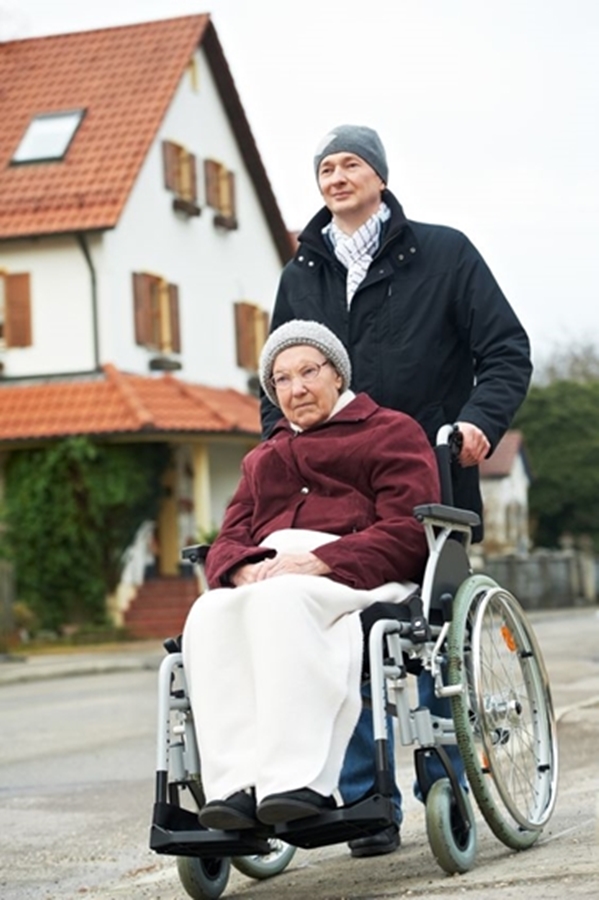Occasionally, I get an email from someone who is a new caregiver asking for advice on how to adjust to this new role they have acquired. Here are some of the life lessons I’ve learned from caregiving.
I can’t be perfect.
Not that I ever was, but I’ve always had the personal philosophy that if I was going to do anything, I wanted to do my best, if not be the best. I didn’t just want to do a good job; I wanted to do a great job. I did not like failing so to avoid that negative feeling, anything that I wasn’t naturally good at doing, I would tend not to do. I would engage in only those things where I could be a success. I took that approach to caregiving, too. I started out wanting to be the perfect wife and caregiver while simultaneously being an exemplary employee in my job. I was depressed and frustrated and heading down a slippery slope till I broke down one day, and Lynn and I discussed what my new reality needed to be. My goal now is to do a good job at everything and exceed where I can, but to recognize I can’t keep up the pace needed to be excellent. That’s hard for me to accept but necessary for survival.
Learn to say “No.”
I am a people pleaser. I usually said “yes” to any request for assistance and I volunteered to help out when someone had a need. My new reality is that even as much as I want to be part of the drama team at church, sing in the choir, or even attend a support group, Lynn needs someone with him 24/7, and most of my friends and family members need to care for their own families after 5 p.m. or on weekends when those types of activities usually occur. I frequently see requests to assist with one type of mission activity or another, or I even hear that my daughter needs someone to keep her sick child, but I have to say, “No.” Right now, Lynn’s health and safety have to take priority so I can’t allow myself to over-commit. I must set priorities and stick with them, or I’ll collapse from exhaustion.
Ask for help.
I still find this one difficult because somewhere in my subconscious, I still have visions of being “superwoman;” however, I realize that I just cannot manage it all on my own. There are things that need to be done that are beyond my skill or strength; there are times I need to go to work or somewhere else that Lynn should not or cannot go. Therefore, I found a network of supporters able to help me when needed. I have some wonderful friends and family members who always want to help me out if they can and who do what I ask if it’s in their ability to do so. I don’t know what I would do without them. However, it’s very humbling to need them so often, and admittedly, it’s very frustrating to have to work our needs around someone else’s availability. It takes a lot of planning and coordination. I’ve also found that volunteer help is not as committed to being on time or coming at all as paid help tends to be. I understand how they think; they are, after all, doing us a favor, and if something comes up that they need to do, they may cancel rather than come as promised. Cancelations and showing up late always have a serious impact on my planning.
Learn to be flexible and creative.
Providing at-home care to someone with multiple limitations has its challenges. Every new cut, scrape, or skin tear has to receive intervention immediately. New “hurts” constantly occur. New discomforts that need intervention from me surface on a daily basis it seems. I live in a rural area so I can’t just walk down the block to pick up what I need, and even if I could do that geographically, I can’t run out and go shopping at the drop of a hat either. So creativity and flexibility are essential to my way of life. If I need a new “intervention,” I think about what I have around the house that either performs a similar function or could be adapted to do so. I’ve rigged all kinds of support devices and comfort interventions with duct tape and padding of some sort. I keep a variety of adhesives, padding, band-aids, ointments, and other adaptable resources on hand at all times. I use my creativity to come up with new solutions and my flexibility to recognize that, many times, there is more than one way to accomplish a goal. I try to always keep in mind my “endpoint.” Where is it that I need to end up? Then, I try to identify as many ways to get there as possible. Often, one of the possible detours provides the solution I need.
Live in the moment.
Living in the moment is the best advice I can share with any new caregiver. None of us know what tomorrow brings; it may be better or worse than today, but most likely, it will at least be different. With caregiving, you just can’t plan for every contingency, no matter how hard you try. There are just too many factors that come into play to manage them all. However, what I do know for sure is this: whatever tomorrow brings, I have no control over, but what is in front of me today is mine to handle. I try to focus on today’s needs. I make tentative plans for other days, preparing what I can in advance but also knowing that a new skin tear, a viral infection, a broken control on the wheelchair, or an exacerbation of MS can change all my plans in a heartbeat. Therefore, I usually have plans A and B just to be safe. I also have learned that as our lives change, we adapt to those changes so that the “change” becomes the new normal for us. By accepting the new normal, I’m able to keep our lives on track and make little changes that help us to keep going. If I look ahead at “what if” then I’ve wasted a lot of energy I don’t have to deal with something that may never come. So, I live life in the moment.
Caregiving is not for the faint of heart or the selfish. It involves sacrifice, hard work, emotional highs and lows, flexibility, and perseverance. What we do is great and worthy, hard and overwhelming, but most of all, it is love made visible.
This article originally appeared on Multiplesclerosis.Net by Health-Union, LLC, and has been reposted with permission.



